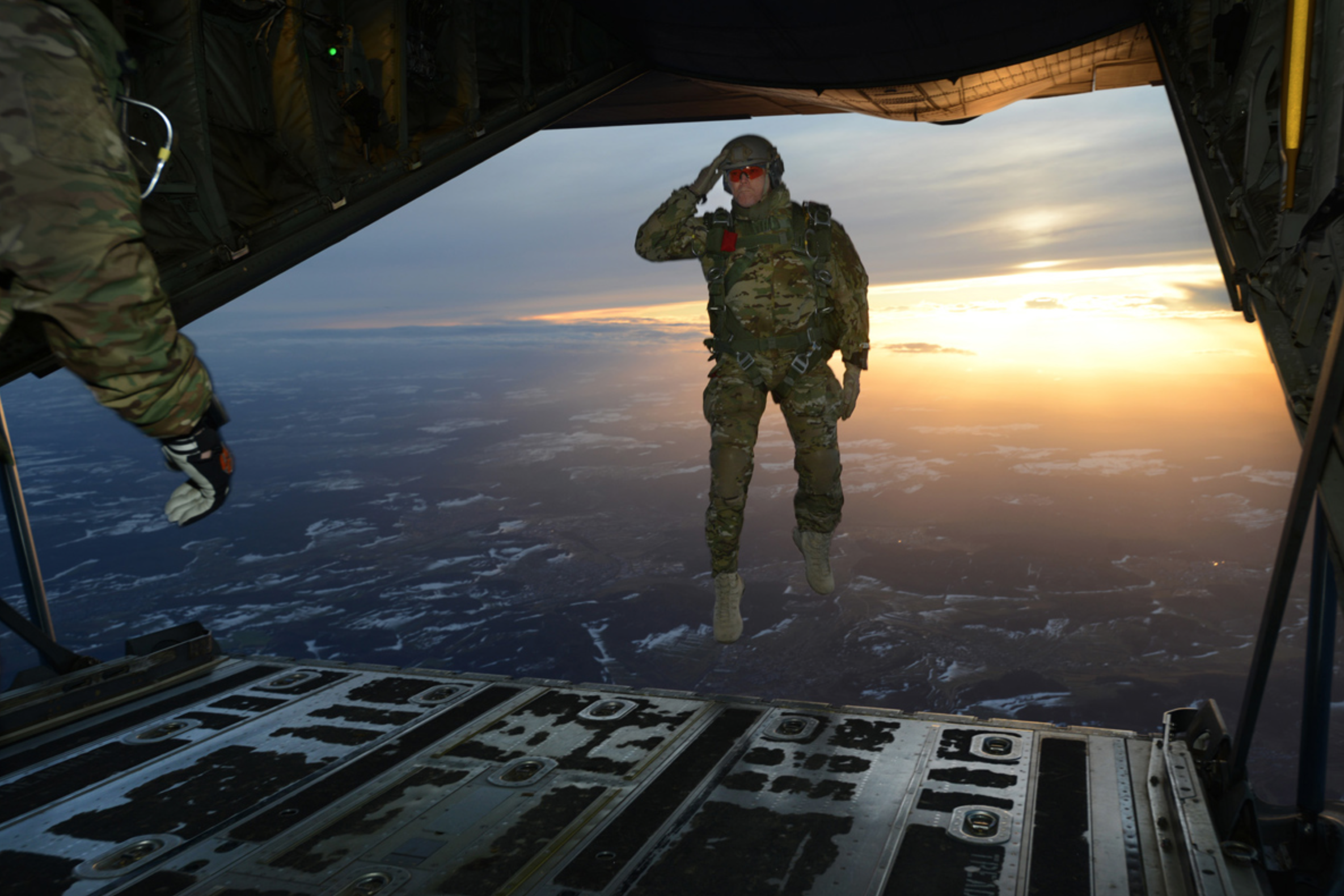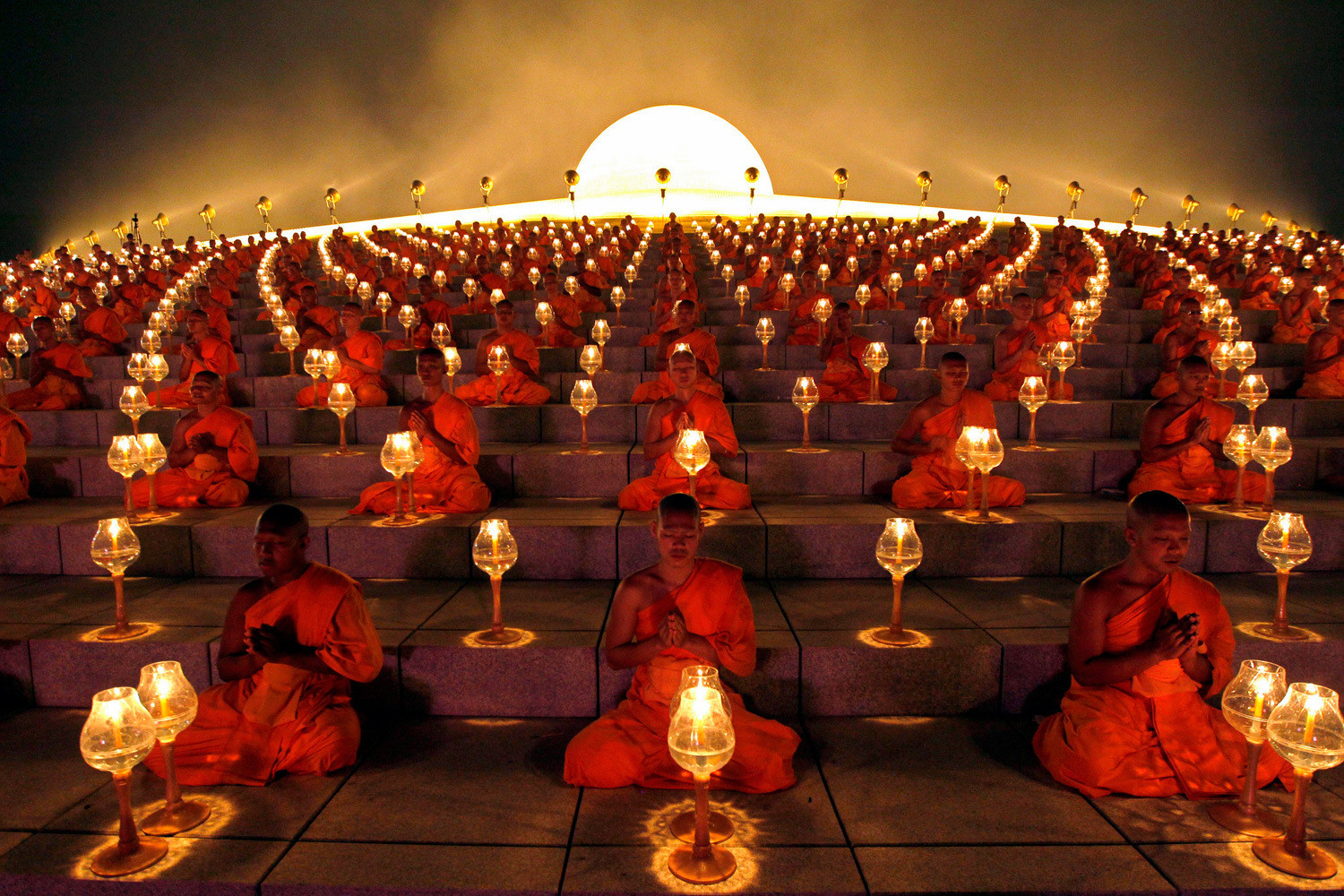Say what you want about the US military, but–damn, they are good at what they do. Not least when that includes looking good while they do it.
The caption tells us that “A US soldier assigned to 1st Battalion, 10th Special Forces Group (Airborne) salutes his fellow Soldiers while jumping out of a C-130 Hercules aircraft over a drop zone in Germany on February 24, 2015.” Good to know, as you might have thought you were seeing a superhero walking on air. And if this image goes viral, I definitely expect to see both those boots and those sunglasses on the street and in upscale ads. As for the athletic stance, crisp salute, and bad ass expression, not so much. Fashion is one thing, and hard work, discipline, and attitude are something else.
Now the skeptics out there might point out that the photo is an Army photo taken to promote the Army, and that there is little need, if any, for paratroops anymore, and that we are witnessing an acutely aesthetic performance that is drastically different from the reality of war. OK, so they would be right about that. One might go further still to point out some of the cultural connections, which run from Robert Heinlein’s Starship Troopers (and the truly awful movie that glories in the worst features of the novel), to the entire Marvel Comics pantheon of supercharged action heroes, to the militarization of space. One could go farther still and see the blaze of sunlight in the distance as a nuclear explosion. Airborne Apocalypse, the movie, coming to a theater of war near you. The common threads are not exactly either pacific or realistic: if you think militarism and fantasy are a great combination, have I got a photo for you.
Still, I think any performer would have to tip the hat to Commander Airwalker, just as any photographer would have to acknowledge that the Army’s “Visual Information Specialist” nailed the photo. In fact, any quick condemnation of the aesthetics involved in either military or media professionalism not only misses the necessarily complex and ambivalent character of war and representation, but also distracts from what really is at stake. Military discipline can have an aesthetic payoff, but so does every other form of discipline, from gymnastics to dog training. It is not enough to point out that military spectacles can be unrealistic propaganda, because one still needs to show what other spectacles might offer a sufficiently compelling alternative. And what makes the Airborne image so difficult to match is that it already has colonized the heavens.
But not conquered them.
The captions tells us that “Buddhist monks pray at the Wat Phra Dhammakaya temple in Pathum Thani province, north of Bangkok on Makha Bucha Day.” Once again, we see professional dedication and discipline that comes from years of training. Now the multitude rather than the individual is featured, but each monk still floats as a single individual in a specific space surrounded by emptiness. If lamps may be the opposite of sunglasses, each photo nonetheless places the human figures against a background of sheer radiance. To highlight the ambivalence of aesthetic appeals, consider how each photograph can illuminate the other: just as the comparison highlights the social organization and personal discipline of the monks (how seen as if an army), so does it highlight the self-sacrifice and devotion of the soldier (now seen as if a monk).
But they are not the same. Even if both organizations are necessary. Even if funding levels or other priorities may be out of whack in both cultures. One spectacle is about war, but more than that, it is about extending the assumptions and deprivations of this world across all worlds, making them all the same, and leaving the imagination little to do but dream of additional threats and more exotic weapons. Or is it more exotic threats and additional weapons? The artistry is all in the present, with only an apocalypse offering any chance of greater transformation.
The other spectacle is about peace, but more than that, it is about recognizing how human finitude is like a single monk in a circle of space: that is, as a single dot of light surrounded by a radiant plenitude of countless Buddha Worlds. This is a vision of how each node of consciousness is part of an endless plurality and infinite particularity. Each point light is both unique and part of the greater light, separate and yet part of the harmony that is available to all everywhere. The assumptions and deprivations of this world need not be anywhere else, but even if they were everywhere else, they would still be infinitesimal compared to what could be. In this spectacle, the imagination is essential, as it is the means by which we really see.
Imagine, then, how we might see a future without war, and the dedication that is needed to get there.
Photographs by Jason Johnston/U.S. Army and Kerek Wongsa/Reuters. Readers who like the monks might want to see this post as well.


Discussion